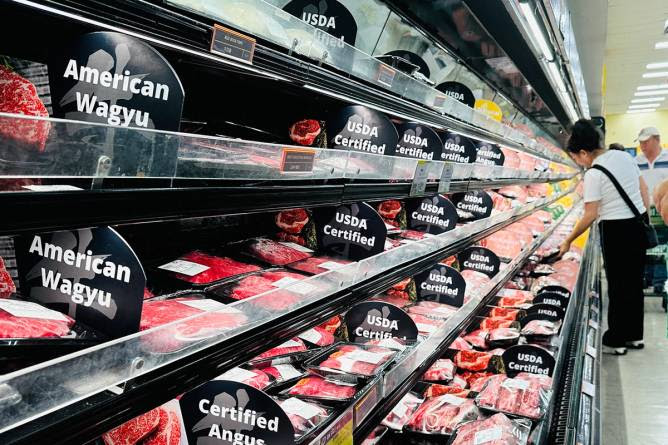The economic picture is starting to look like someone took a Polaroid of a Jackson Pollock painting. It’s still developing, but you can already tell it’s going to be a bit jumbled.
Annual inflation hit 2.9% last month, marking the fastest increase since January. Jobless claims are ticking up, too—the latest sign of a softening labor market. That puts the Fed in a tough spot headed into next week’s meeting, where it’ll decide on an interest rate cut.
Prices were a mixed bag
The Bureau of Labor Statistics reported yesterday that the consumer price index (CPI) rose 0.4% from July to August. Airfare jumped 5.9% and car repairs spiked 2.4% month over month, while dairy and bakery products only rose 0.1%.
But no one got hit harder than Ron Swanson. Year over year:
- Roasted coffee was up 21.7%.
- Uncooked beef steaks were up 16.6%.
- Eggs were up 10.9%.
- Bacon was up 7.2%.
There was some good news: Hospital services and car insurance rates were flat, and shelter prices are slowing down.
The impact of tariffs. Some major retailers—including Walmart, Best Buy, and Target—have flat-out said they raised prices because of tariffs. Broken down by category, tariffs are having the biggest effect on household furnishings, appliances, recreational goods, and apparel, CNBC reported.
Labor pains: Normally, when the Fed sees higher inflation, it raises interest rates, or holds them steady, to cool down the economy. But since the labor market is also wobbling, the Fed’s decision is more complicated:
- Initial jobless claims hit their highest level in nearly four years.
- The BLS announced earlier this week that the US created 911,000 fewer jobs than originally thought for the year ending in March 2025.
Ball’s in your court, JPow: Even with the conflicting data, the Fed is expected to cut rates a quarter percentage point at next week’s meeting.—BC
